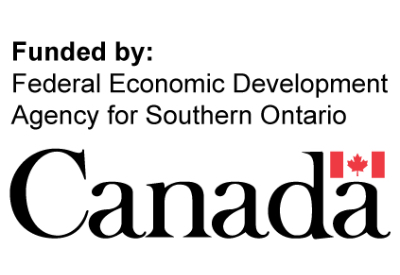The Canadian Space Economy Could be Worth $40 Billion by 2040
March 6, 2024

According to a new report by Deloitte Canada, the country needs a bold public policy strategy to strengthen its position in the space sector—a strategic imperative for a more thriving economy
A new report by Deloitte Canada, in collaboration with Space Canada, states that Canada is well-positioned to benefit from the significant economic opportunities that the space sector presents. However, to do so, the country needs to develop a smart, sustained, and well-executed strategy. The report, Reaching beyond: A $40 billion Canadian space economy by 2040, examines the current role of space in Canada’s economy and its potential for growth and further contribution to the country’s prosperity.
“Space is a domain of awe-inspiring exploration and discovery, but it’s much more than that. Space-based assets and services are now critical infrastructure,” says Scott Streiner, Senior Advisor at Deloitte Canada. “Strengthening Canada’s position in the space sector is a strategic imperative. For the sake of the country’s economic competitiveness and productivity, and to help ensure national security and essential services for citizens, Canada needs to bring energy and determination to the new space race. Now is the moment to act—to build on that progress, mobilize our capabilities and resources, and aim for “40 by 40”—a $40 billion national space economy by 2040.”
Space activity is growing at an unprecedented rate and becoming critical to modern economies and societies, national security, and climate action. It is a domain of tremendous opportunity for entrepreneurs, investors, and nations. As impressive as Canada’s space sector may appear, it accounts for only about one per cent of today’s worldwide space economy—despite the country’s economy representing approximately two per cent of the global GDP.
The report notes that Canada, which is the third spacefaring nation, has fallen behind as other countries have moved into space quickly and ambitiously. However, it also states that with drive, focus, and a well-executed strategy, Canada can regain momentum and capture a share of the worldwide space economy comparable to its share of the general economy. Since the field is inherently research-driven and has a global impact, its growth could help solve Canada’s long-standing challenges for innovation, scaling-up, and productivity.
“The space sector represents an immense economic opportunity for Canada. Plus, through space innovation, we can address critical global challenges like climate change and inequality, all while enhancing Canada’s defence and security,” says Brian Gallant, CEO of Space Canada. “Deloitte’s report effectively highlights that we have the experience and ingenuity to seize the benefits from the growing global space sector, and Canada now needs to make it a priority. The Canadian space ecosystem is eager to help lead the journey toward a $40 billion space economy by 2040, all while ensuring advancements in space bring tangible benefits to Canadians and people around the world.”
Despite the rise in commercial activity, space remains a domain in which public policies and programs—and choices governments make on purchasing and delivering their own services—have an outsized effect on private firms. To realize the full potential of the space sector, purposeful and effective public policy is required. The report outlines clear recommendations for a thriving Canadian space sector, including:
- Strengthening governance: Space is a cross-cutting policy domain that requires ongoing interorganizational dialogue and the execution of long-term, coherent, and coordinated strategies. Canada’s policies and programs must be steered by an integrated national body—one that will demand focused leadership from the highest levels.
- Modernizing the legal framework: The legislative and regulatory framework governing Canada’s space activity is in urgent need of modernization. By drawing from consultations regarding the establishment of a clear regulatory framework for space and lessons from other jurisdictions, Canada can accelerate its progress and maximize its alignment at an international level.
- Expanding collaboration: Collaboration between the private sector, academia and government can drive innovation in the space sector. Various measures can help make this happen, such as establishing a virtual platform for companies and researchers to connect, facilitating collaboration between government scientists and private-sector players, and making government labs and testing facilities available to early-stage space companies at a nominal cost.
Space-based activity will be a keystone of the national and global economy over the next century, and Canada’s public and private sectors have the opportunity to be major players. Now is the time to act.
Click here to read the full report.
Related Story
Ontario Promotes Growing Aerospace Industry During Mission to France and Switzerland
The Ontario government has concluded a successful business mission to France and Switzerland to promote the province’s aerospace, manufacturing and life sciences sectors and explore new opportunities for investment and job creation. Vic Fedeli, Minister of Economic Development, Job Creation and Trade, led a delegation of 19 organizations to the 2023 Paris Air Show, the largest aerospace exhibition in the world, where over $4 million in investments for Ontario were announced by global aerospace manufacturers.



